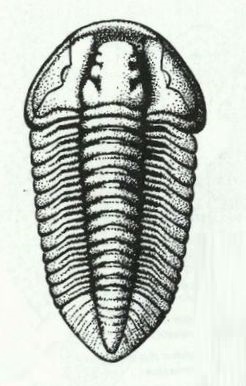| Flexicalymene Temporal range: | |
|---|---|
 | |
| Flexicalymene caractaci (Salter, 1865) from the Caradoc Series of Shropshire, England. | |
| Scientific classification | |
| Domain: | Eukaryota |
| Kingdom: | Animalia |
| Phylum: | Arthropoda |
| Clade: | † Artiopoda |
| Class: | † Trilobita |
| Order: | † Phacopida |
| Family: | † Calymenidae |
| Genus: | † Flexicalymene Shirly, 1936 [1] |
| Species | |
See text | |

Flexicalymene is a genus of trilobites belonging to the order Phacopida, suborder Calymenina and family Calymenidae. Flexicalymene specimens can be mistaken for Calymene , Gravicalymene , Diacalymene and a few other Calymenina genera. They are used as an index fossil in the Ordovician. Ohio and North America are particularly known for being rich with Flexicalymene fossils.




